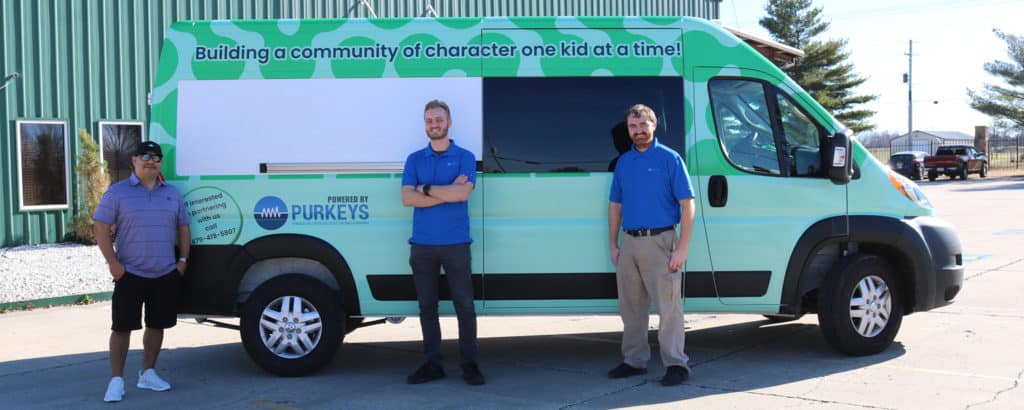 Sweets. King size candy bars. Chips. Salty snacks. Soda pop. These are the items that most prominently greet you when you walk into a gas station. With a little looking around, you may find a refrigerated section with some little fruit cups and sandwiches. Sadly, the scene pretty much the same when walking into a truck stop. Add in a small restaurant that serves dominantly unhealthy foods, and there you have one of the biggest stumbling blocks over-the-road truck drivers face on the road to being healthy.
Sweets. King size candy bars. Chips. Salty snacks. Soda pop. These are the items that most prominently greet you when you walk into a gas station. With a little looking around, you may find a refrigerated section with some little fruit cups and sandwiches. Sadly, the scene pretty much the same when walking into a truck stop. Add in a small restaurant that serves dominantly unhealthy foods, and there you have one of the biggest stumbling blocks over-the-road truck drivers face on the road to being healthy.
As a result of this obstacle, and several others just as common, being healthy as a truck driver can be tricky. However, the new year is as good a time as any to tackle making the lifestyle changes that you need. To start your journey, here are our top 5 tips for being a healthier driver this year:
- Eat healthier snacks
Steer clear of the sweet and salty snacks so readily available at any truck stop and opt for healthier alternatives instead. For example, instead of grabbing a bag of potato chips, why not eat air-popped popcorn or a handful of almonds? Other healthy snacks could include:
- hard-boiled eggs
- sliced veggies – such as celery, red peppers, olives, or baby carrots. Eat them plain, with your favorite hummus, or try a yogurt-based dip
- Greek yogurt with fresh berries
- apple slices with peanut butter – or any fruit, for that matter. Bananas, apples, pears, grapes, and oranges all make excellent snacks, with or without the nut butter
- turkey roll-ups – all you need is a slice of turkey, a teaspoon of cream cheese, and a pickle or strip of cucumber. Spread the cream cheese on the turkey, place the pickle/cucumber slice in the middle, and roll it up!
Also, be mindful of when you snack. Are you eating just because you’re bored? Try to think through when the food will help you stay alert and energized and when it’s time to put the food out of reach.
- Eat healthier meals
Eating out as much as many drivers do can be not just unhealthy, but expensive. Eating healthily while on the road takes more effort and planning, but it is worth it. If your company allows inverters in the truck, your world of on-the-road food options just expanded! You can use the inverter to power small home appliances (and not just a mini fridge and microwave—think outside the box) such as a mini oven or crock pot. To get started with cooking in your cab, check out our slow-cooker recipes for turkey and stuffing and pot roast. There are plenty of cheap, easy recipes that would be ideal for making in your cab—we suggest finding some new favorites for this year! Also, try pre-preparing some of your meals when you are home over the weekend and cooking them throughout the week. That will help give variety to your meal plan.
If you decide to eat out on occasion, just remember to check the menu for healthier options, even if it’s as simple as changing the side of fries for a side salad (and be careful of the dressing—some dressings aren’t as healthy as you think!).
- Drink lots of water
You may think you don’t need to drink as much water because you’re not moving around much, but that’s not true. Water is important to proper bodily function. Besides, have you stopped to consider how much coffee, soda, or energy drink you consume in a given day? Drinks such as coffee or energy drinks can give your mind and body a short-term artificial boost of energy and focus, however, overusing them isn’t healthy. They, along with too much soda, have a calorie and/or sugar count that can cause weight gain, dehydration, and other potential health risks. It is recommended that intake of these beverages be limited or eliminated from your diet. Replace sugary or caffeinated drinks with water. On average, it is estimated that an adult male should consume around 15.5 cups (3.7 liters) of water a day, while women should consume around 11.5 cups (2.7 liters).
- Do your exercise
I know, I know. You hear that from everyone—HR, your mother, your best friend—and it’s hard to be motivated enough to take the time to do it. Here are a few simple ideas to help you get started:
- find a park near where you’re stopped to rest and go on a 15 minute or half hour walk. No park nearby? That’s okay:
- take a stroll through the parking lot. If there are other drivers parked nearby, consider checking to see if any of them would like to walk with you. You might just make a new friend
- walk around your tractor trailer – fun fact, 32 laps around a tractor-trailer is 1 mile!
- jumping jacks
- jump rope
- pushups
- Beginner: Hands on the side of the truck, standing
- Intermediate: Hands on the bunk or truck step
- Advanced: Hands on the ground
- walking lunges – try using some light weights to add difficulty
- squats
- resistance bands (these often come with a little guide book that includes some simple exercises)
There are also some simple stretches you can do while driving to keep your muscles relaxed and mind sharp, such as shoulder rolls, neck rolls, and upper-body twists.
- Get a good night’s sleep!
Sleep. Is. Essential. I can’t stress that enough. Your truck is your home away from home, as well as your office. Do what you need to in order to get a full 8 hours of sleep every night. Maybe that involves getting a better pillow, a fan, a heater, or a white noise machine. Maybe it involves giving yourself a time limit on staring at memes on your phone. Whatever it is—do it.
One of the big things that can keep drivers from sleeping well is stress. If you’re stressed, try going on a walk, reading a book, or meditating. Make sure you get out of your truck as least a few times a day, however, to avoid getting “cabin fever.”
Following these 5 tips may sound a little overwhelming if you’re not doing them already. Take it slow, one step at a time, and you’ll get there. Good luck!=



